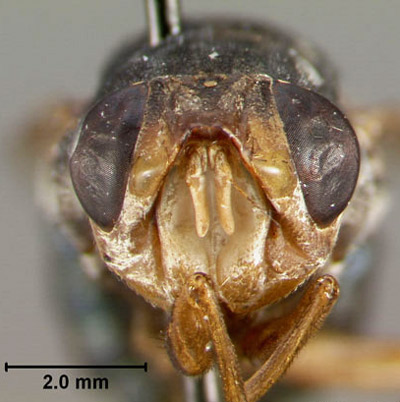This Halloween week I would like to highlight some scary insects for you. While I normally endorse bugs and try to get people to not look upon them with fear and loathing, that doesn't mean that all insects are cuddly, wuddly woolyworms. Some can capture our greatest fears and make them real. Such as today’s scary bug, the human botfly!
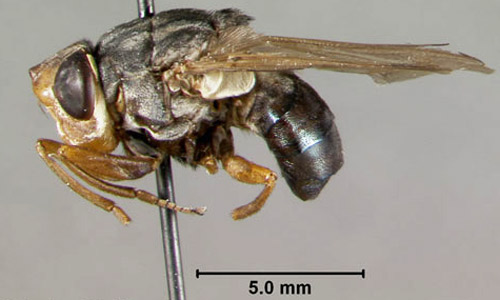 |
| Photo: Lyle Buss; University of Florida |
Imagine if you will, that you take a trip down to South
America to take in the sights. It’s beautiful, it’s warm, every drink comes
with a little umbrella, and it is paradise. But all good things come to an end
and you make your way back to your homeland. Upon your return you get a funny
feeling though. It isn't a longing for more Brazilian rum, it’s the strange
feeling that there’s something inside you. You may even notice the sound of
chewing when you aren't eating. Have you lost your mind? Wandered into the
movie Aliens? You look behind your ear with a mirror and see a small hole.
Inside the hole you notice something… moving. Congratulations, you’re the proud
host of your very own botfly.
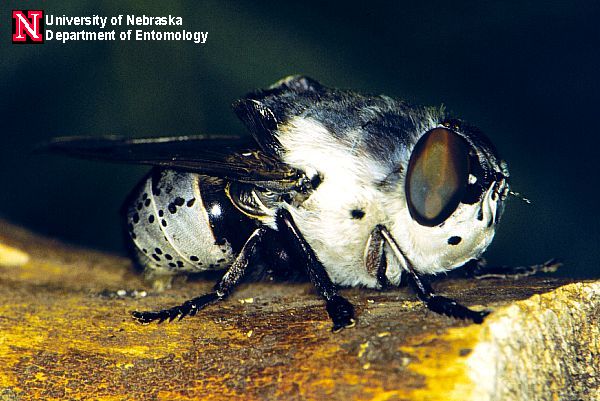 |
| Rabbit bot fly; University of Nebraska |
Botflies, also known as warble flies or heel flies, can
attack a variety of animals. If you have ever hunted squirrel then you
undoubtedly have encountered them developing on or in the furry, little, woodland
creatures. Some species develop under the skin, while others aim to be ingested
and develop in the stomachs or intestines of their host. They differ from other
flies we may recognize because instead of their maggots feeding on decaying
flesh they prefer the still living, warm kind of flesh. And guess what? One
species uses us as its preferred host!
The human
botfly, Dermatobia hominis, is an
under the skin dweller. Just how do we end up with such a horror inside of us?
Well, the adult female fly, which resembles a bumble bee, will snatch a
mosquito that's just out and about flying around. The
botfly then glues a couple of eggs to the mosquito and lets it go. When the
mosquito lands on one of us, our body heat will warm the eggs allowing them to
hatch. Once this happens the newly born maggot drops down and will use the mosquito bite area
as an entry point to get under our skin. They go in head first and use their
claw like mouthparts to scrape away at our tissues. Their posterior end is like
a snorkel that goes to the surface of our skin so the maggot can breathe. It
feeds inside of us for between 8 weeks and 3 months. They don’t really feed on our
flesh as much as the body’s reaction to it, which are secretions known as exudates. |
| Mmmm... exudates Photo: Lyle Buss; University of Florida |
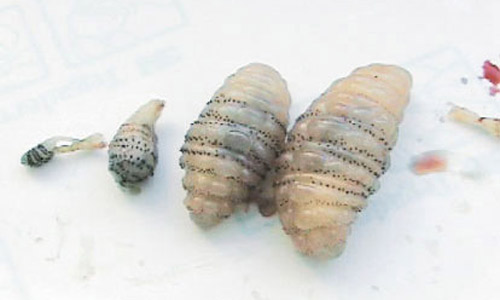 |
| Growth of a botfly maggot Photograph by Francisco M. Marty, M.D. and Kristen R. Whiteside, B.S., Brigham and Women's Hospital, Boston, MA. |
Having a living, breathing maggot under your skin obviously leads to some outward symptoms and inner turmoil. People usually first notice a shooting sensation of pain and then feel movement once the maggot is large. This is usually when people will find a swelling that has a hole in the middle.
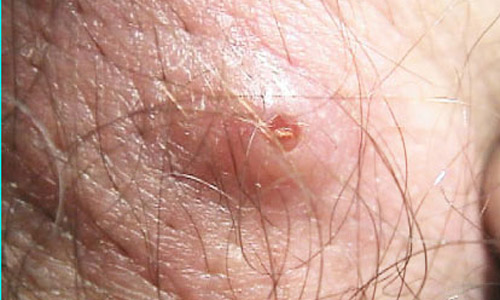 |
| "But dad, I asked for a pony." "Ponies are for winners, you get a botfly." Photograph by Francisco M. Marty, M.D. and Kristen R. Whiteside, B.S., Brigham and Women's Hospital, Boston, MA. |
Obviously, after this discovery people want to remove the maggot. Unfortunately the little buggers are designed to prevent this. While alive they can inflate parts of their bodies to inhibit yanking them out and they also feature backward facing spines that hook into you during the removal process. The usual home remedy is to take nail polish or athletic tape and place it across the hole to suffocate the maggot. Once this is accomplished you can use some tweezers to pull it out. You must always be careful not leave any bits of it behind as this risks infection. Hey, want to see some people accomplish the feat? Here’s a video!
https://www.youtube.com/watch?v=23eimVLAQ2c
Oh! And another one!
https://www.youtube.com/watch?v=OC0bqp27L30
If they aren't removed of course they will leave on their own. They crawl out and pupate, usually in soil, and hatch out to start the process all over again.
Don’t Google botflies over lunch.
Well, Halloween is almost upon us and therefore scary insect week is almost kaput. We have one more installment, so I hope you will come back to tomorrow to learn about our next terrifying bug!

